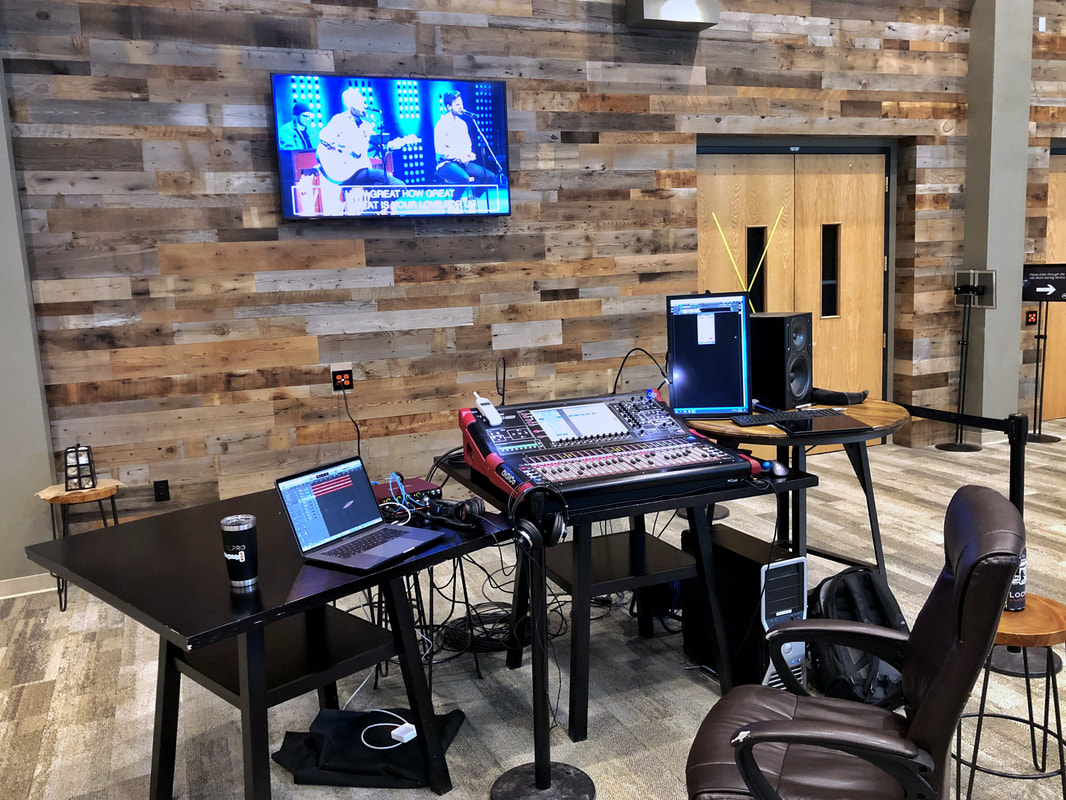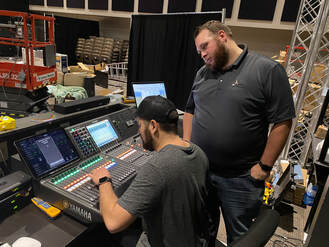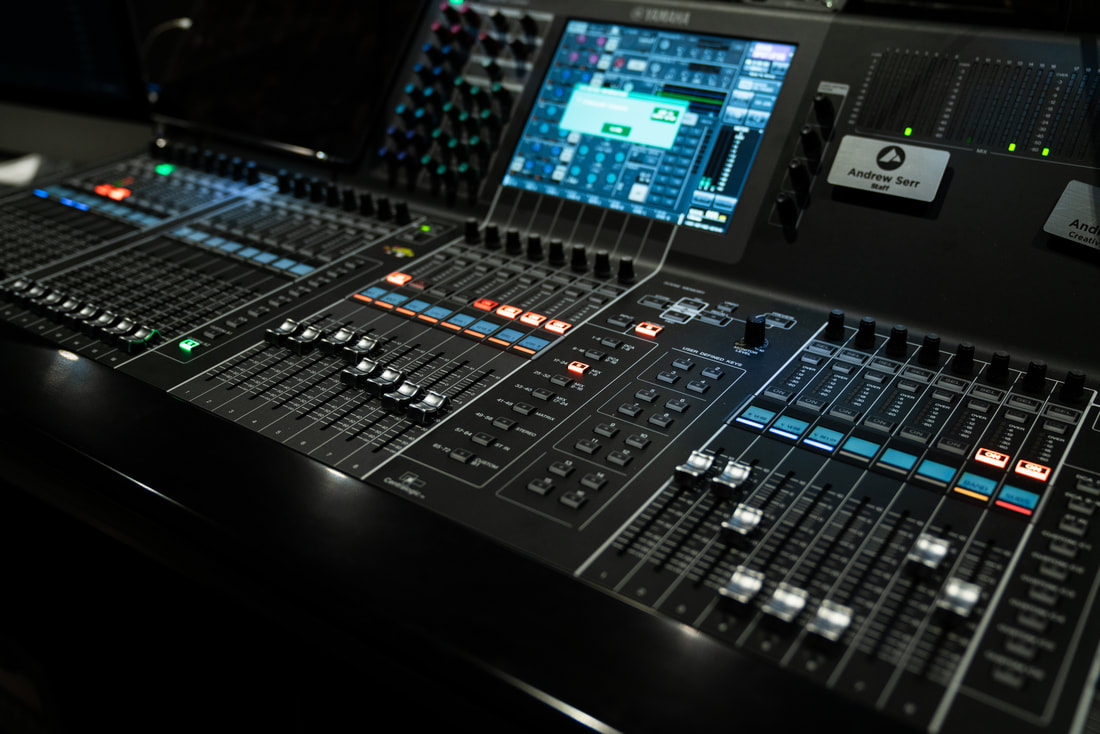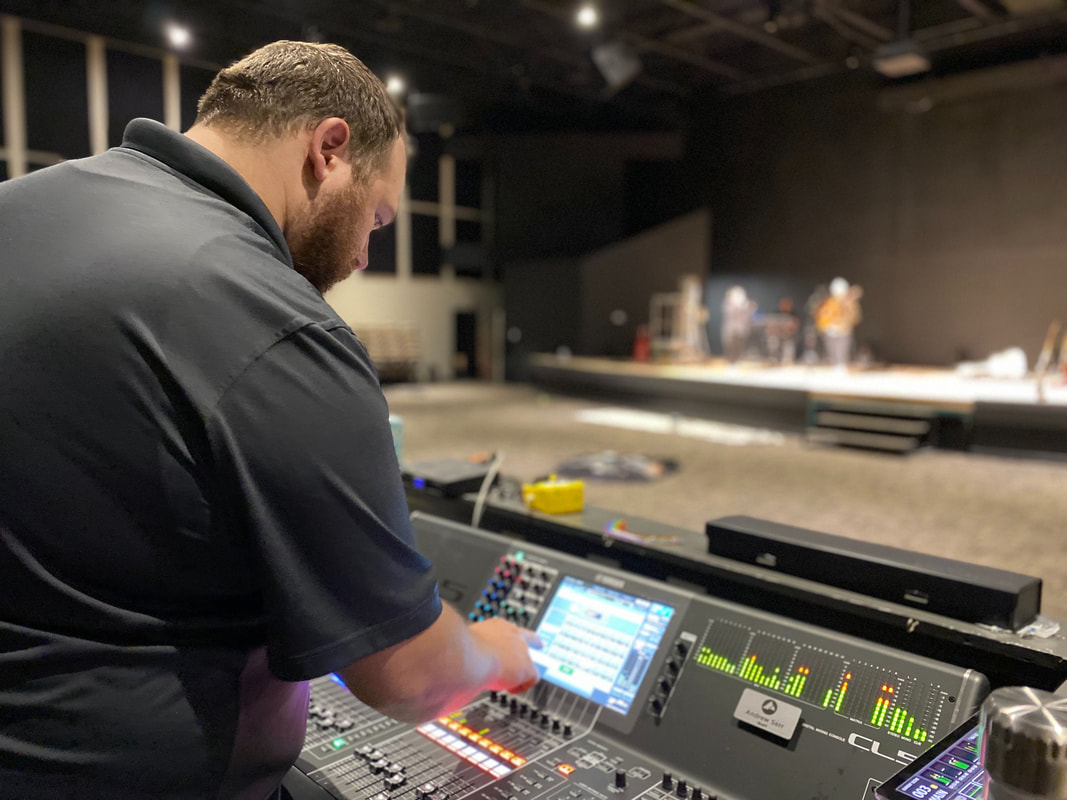...And that being a good thing
So, how should you choose your mix? For myself, on a weekly basis I am the A1 for my local church. Like many churches we use planning center to schedule teams and upload the set list for the week. Another thing that my church does is the worship pastor adds in the version of the song that he is wanting to emulate. Part of my preparation is to listen to the version of the song that he puts into planning center. Listening gives me the base for the vison of what the worship pastor is looking for in that song.  Another way I prepare for what is going to be in the mix is to use the band rehearsal time to really pay attention to what is being played rather than try and mix. This is my chance to listen to individual instruments. For example, let’s talk about the electric guitars. Very often we have two electric guitar players on stage, and they are each using 2 amps. That is 4 channels of electric that I get to choose from for every song. During practice, I try and listen to what each electric is doing and the different tone I’m receiving to decide what I am going to use for each song, and where the lead lines are that I am going to feature. This brings up another important point. What instruments are going to be featured for each song is one of the most important parts of choosing your mix. Featuring the right instrument for the song helps to bring the correct dynamic for the song in the room. Sometimes when it comes to choosing, less is more. Now what do I mean by that? Just because an instrument is on stage doesn’t mean it needs to be forefront in your mix all the time. In fact, where I tend to make the most mistakes is when I’m trying to put too much into my mix. Now this, like most things, needs to be considered on a situational basis. For some songs, you might need both electric guitars, keys, and the tracks to get that full sound or rhythm the song naturally has.  Once you have decided what you want your mix to sound like, how do you go about implementing it, and keeping it consistent? Personally, I use 2 different methods, depending on the set and situation. The first method is old-school, taking good notes. I print off a run sheet, and make specific notes about what instruments I’m using, and what changes I need to make between each song. The other method has been made possible by the rise of digital audio and digital sound consoles. Digital consoles allow you to save live presets, which allow you to push one button and change your mix on the fly. Be careful though because this feature can be a double-edged sword. If you need to make a global change to your mix, you must go to each preset and update that preset. The more expensive boards make this process easier, but the learning curve can also be steeper. Presets also take more time to program and get dialed in. I really like to use this feature on larger events when I have a lot of musicians on stage. This feature is also helpful if you have multiple services because it keeps your mix consistent service to service. Overall, though enjoy yourself and work the process! Maybe try a few of these pieces each week and see what works for you. It can take multiple weeks to work each piece in but just like musicians practice makes perfect. Now, with livestream mixes being so important now days, you may want to make slightly different changes to how you are mixing your audio for the livestream. You can click HERE to read more about livestream audio, or you can contact us at [email protected] on how to get help improving your stream audio as well! -Trevor has been a Front-of-House audio engineer for over 10 years now. He loves his current console, a Digico SD9, but has spent time behind a variety of a consoles. Recently he has been doing some studio engineering work and is really enjoying the challenge of learning different DAW’s.
0 Comments
Your comment will be posted after it is approved.
Leave a Reply. |
AuthorsAll of the Lambda Staff contribute to the Blog. If you have any questions about the info we provide, please don't hesitate to ask! ResourcesCheck out our resources page for FREE checklists and tools we mention in articles! We are here to help you improve and maintain your Audio Visual Systems!
Categories
All
|
Lambda Audio Visual Inc.Lambda Audio Visual Inc
15954 Jackson Creek Pkwy Ste. B332 Monument CO, 80132 Phone: (719) 629-7905 Email: [email protected] |
|



 RSS Feed
RSS Feed

